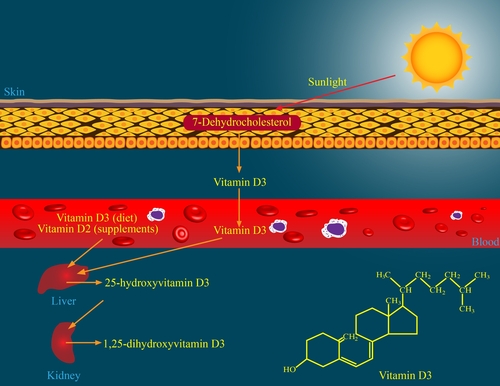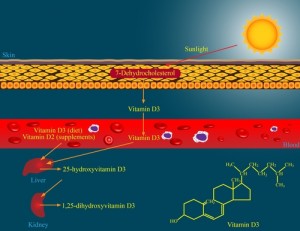Low Vitamin D is Linked to Severe Acute Optic Neuritis in Multiple Sclerosis

 For the approximately 15-20% of multiple sclerosis patients with acute optic neuritis (AON), lack of vitamin D may be partly responsible. A new study published in Neurology identified a link between vitamin D levels and AON severity. Individuals with higher vitamin D levels may experience less severe AON attacks.
For the approximately 15-20% of multiple sclerosis patients with acute optic neuritis (AON), lack of vitamin D may be partly responsible. A new study published in Neurology identified a link between vitamin D levels and AON severity. Individuals with higher vitamin D levels may experience less severe AON attacks.
Lead author Muhammad Malik, MD, principal investigator Tanua Chitnis, MD, and colleagues from the Partners Multiple Sclerosis Center and various institutions in the Boston area were interested in the relationship between low vitamin D levels and both an increased relapse rate in pediatric multiple sclerosis patients and an increased number of lesions in adult multiple sclerosis patients. The team wanted to better understand the clinical and demographic predictors of AON severity and recovery of multiple sclerosis patients and to compare severity and recovery between pediatric and adult multiple sclerosis patients with AON.
To gather data, the researchers studied three groups of patients. The first was composed of 253 adult AON patients and the second was composed of 38 pediatric AON patients; both groups had AON as their initial presenting symptom for multiple sclerosis. The third group was composed of 101 patients with AON who did not experience AON as their initial symptom. All patients were selected from the Comprehensive Longitudinal Investigation of Multiple Sclerosis at Brigham and Women’s Hospital (CLIMB) Study at the Partners Multiple Sclerosis Center.
Statistics on the data revealed an odds ratio of 0.47 for every 10-U increase in vitamin D levels. However, vitamin D levels were not associated with recovery from AON attacks. Men had an especially worse recovery, with an odds ratio of 2.28, and patients with severe attacks also recovered poorly (odds ratio of 5.24). Recovery was better for pediatric patients, although AON severity was similar between pediatric and adult patients.
[adrotate group=”4″]
Severity of AON attacks was based on visual acuity. A mild attack was defined as less than 20/40; moderate, 20/50-20/190; and severe, greater than 20/200. Recovery was defined by gains in visual acuity over one year, with complete recovery defined as less than 20/20; fair, 20/40; and poor, greater than 20/50.
Overall, the authors believe vitamin D plays an important role in AON attack severity, but more studies are warranted. According to the article, “. . . low vitamin D levels are related to worse multiple sclerosis disease course.” The authors also suggested age plays a role in recovery, as well as gender and hormones.






